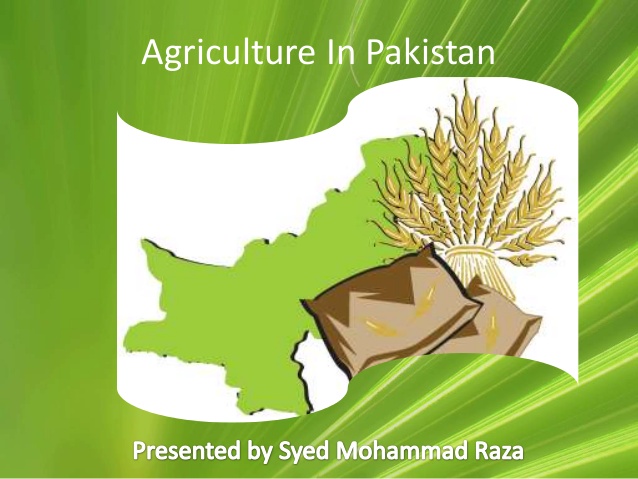Pakistan agriculture sector plays a crucial role in the country’s economy, providing employment, income, and food security for a significant portion of the population. The sector contributes about 19% to the national GDP and employs nearly 42% of the labor force. However, despite its importance, the agriculture sector faces numerous challenges that impact food security and overall economic stability. This article explores the key aspects of Pakistan’s agriculture sector, the challenges it faces, and the initiatives being taken to enhance food security.
Overview of Pakistan’s Agriculture Sector
Key Crops and Livestock
Pakistan agriculture sector is diverse, with the production of various crops and livestock. The country’s major crops include wheat, rice, cotton, sugarcane, and maize. Wheat is the staple food and the largest cultivated crop, while rice and cotton are significant export commodities. The livestock sector, comprising cattle, buffalo, sheep, goats, and poultry, also plays a vital role in the rural economy, providing meat, milk, and other products.
Agricultural Zones and Climate
The country is divided into several agro-ecological zones, each with distinct climatic conditions suitable for different crops. The major agricultural zones include the Indus Basin, the Balochistan Plateau, the Northern Mountainous Region, and the Thar Desert. The Indus Basin, with its extensive irrigation system, is the most productive region, supporting the majority of Pakistan’s crop production.
Challenges Facing Pakistan’s Agriculture Sector
Water Scarcity and Irrigation Issues
One of the most pressing challenges in Pakistan’s agriculture sector is water scarcity. The country relies heavily on the Indus River and its tributaries for irrigation, but inefficient water management and outdated irrigation infrastructure lead to significant water losses. Additionally, over-extraction of groundwater has resulted in declining water tables, further exacerbating the water crisis. Climate change poses another challenge, with unpredictable weather patterns and reduced glacial melt affecting water availability.
Land Degradation and Soil Fertility
Land degradation, including soil erosion, salinization, and desertification, is a major concern for Pakistan agriculture. Unsustainable farming practices, deforestation, and overgrazing contribute to the deterioration of soil quality and fertility. This degradation reduces crop yields and negatively impacts the livelihoods of farmers, particularly smallholders who rely heavily on their land for sustenance.
Limited Access to Modern Technology and Inputs
Many farmers in Pakistan lack access to modern agricultural technologies and inputs, such as high-quality seeds, fertilizers, and pesticides. This is particularly true for small and medium-sized farms, which dominate the agricultural landscape. Limited access to credit and financing further hampers farmers’ ability to invest in better inputs and technologies, affecting productivity and profitability.
Market Access and Infrastructure
Market access and infrastructure are critical for the efficient distribution of agricultural products. However, inadequate transportation, storage, and market facilities in Pakistan lead to significant post-harvest losses and reduced income for farmers. The lack of cold storage facilities, in particular, affects the quality and shelf life of perishable goods, such as fruits and vegetables.
Policy and Institutional Challenges
Inconsistent agricultural policies and weak institutional support are additional challenges facing Pakistan agriculture sector. Policy instability and inadequate extension services hinder the adoption of modern farming practices and technologies. Moreover, the lack of effective land reform and unclear land tenure rights create uncertainty and discourage investment in agriculture.
Food Security in Pakistan
Current Status and Concerns
Food security, which involves ensuring that all people have access to sufficient, safe, and nutritious food, is a critical issue in Pakistan. Despite being an agricultural country, Pakistan faces challenges in achieving food security. Factors such as population growth, poverty, and food price inflation contribute to food insecurity, particularly among vulnerable populations in rural and urban areas.
Malnutrition and Health Impacts
Malnutrition is a significant concern in Pakistan, with high rates of undernutrition and micronutrient deficiencies, particularly among children and women. According to the World Food Programme, nearly 37% of children under five are stunted, and 17.7% suffer from wasting. This high prevalence of malnutrition has long-term health and economic implications, affecting cognitive development, productivity, and overall well-being.
Government Initiatives and Programs
To address food security challenges, the Pakistani government has implemented various programs and initiatives. The National Food Security Policy aims to enhance agricultural productivity, improve food distribution, and ensure access to food for all citizens. Additionally, the government promotes the use of biofortified crops and micronutrient supplementation to combat malnutrition. Social safety net programs, such as the Benazir Income Support Programme (BISP), provide financial assistance to low-income families to help them afford basic necessities, including food.
Innovations and Future Prospects
Adoption of Modern Farming Techniques
To improve agricultural productivity and sustainability, there is a growing emphasis on adopting modern farming techniques and technologies. Precision agriculture, which uses data and technology to optimize farming practices, can help farmers use resources more efficiently. The promotion of high-yielding and climate-resilient crop varieties is also crucial for enhancing food security in the face of climate change.
Water Management and Irrigation Reforms
Improving water management and irrigation practices is essential for sustainable agriculture in Pakistan. The introduction of water-saving technologies, such as drip and sprinkler irrigation, can reduce water use and increase efficiency. Additionally, reforms to modernize the irrigation infrastructure and better manage water resources are needed to address water scarcity challenges.
Strengthening Agricultural Research and Development
Investing in agricultural research and development (R&D) is key to driving innovation and improving productivity. Public and private sector collaboration in R&D can lead to the development of new technologies, better crop varieties, and improved farming practices. Extension services should also be strengthened to ensure that farmers have access to the latest knowledge and technologies.
Enhancing Market Access and Value Chains
Pakistan Agriculture Sector access and developing efficient value chains are critical for maximizing the benefits of agricultural production. Investments in transportation, storage, and market infrastructure can reduce post-harvest losses and increase farmers’ incomes. The promotion of agribusiness and agro-processing industries can also create value-added products and generate employment opportunities.
For complete information, follow this link


